The Best Backup Cameras For Cars That Don't Have One

After years of delay and hundreds of avoidable deaths, all cars sold from the 2018 model year onward in the US and Canada were required to have a backup camera (the EU is phasing them in during 2022, and the UK is discussing them). But while this important safety feature is now standard across the board, most cars on the roads today are not equipped with a reverse camera. That’s where an aftermarket backup camera comes in. We’ve combed through the top-rated models across styles and price points to bring you what we think are the best choices for different needs.
About Aftermarket Backup Cameras
There are some things to know before you start shopping for a rearview camera. First, you’ll need some type of monitor to pair with your aftermarket backup camera. Many vehicles have factory-installed touchscreens or monitors with backup camera input, or you may have an aftermarket screen with the right inputs installed in your vehicle already. We’ve included an option for a standalone add-on backup camera if that’s all you need, and some aftermarket navigation systems, such as those from Garmin/Nuvi, have inputs for backup cameras. For those that don’t, you’ll need a kit that comes with some kind of screen, either a small monitor or a mirror. Some backup cameras perform better than others in low-light conditions. The more sophisticated cameras can “see” infrared waves even with little ambient light.
Even if you install a wireless backup camera (which have their own issues), you’ll still have to wire it up to a power source. Wired models will require, well, running wires inside your car, which you’ll probably want to tuck out of the way behind your interior trim. For that, you won’t need any particular skills, but you will need at least a basic set of trim tools and lots of patience. If that doesn’t sound appealing, any body shop or car electronics shop will do it for you.
We have found backup cameras to be one of the more poorly reviewed categories that we’ve researched.
Editor’s Note: Supplies of backup cameras are affected by both global logistics problems and semiconductor (chip) shortages. We revisit this list regularly to try to keep up with ongoing availability issues, but you may have to look at several models to find one you like in stock.
Table of contents
- 1. Editor's Pick: Furrion Vision S 4.3 Inch Wireless Backup System
- 2: Best If You Have a Screen: Pioneer ND-BC8 Universal backup camera
- 3. Best for RVs: Yakry Y28 HighWay Observation System
- 4: Best Backup Mirror Cam: AUTO-VOX T2 Backup Camera
- 5: Biggest Screen: WolfBox G840H WOLFBOX 12" 2.5K Mirror Dash Cam
- 6: Truly Wireless: AUTO-VOX TW1 Truly Wireless Backup Camera
- 7. Garmin BC 30 Wireless Backup Camera
- 8. LeeKooLuu LK1 Rear View Mirror Camera
- Frequently Asked Questions
- Wireless Versus Wired Backup Cameras
- Backup Camera Technological Development
- Recent Updates:
1. Editor's Pick: Furrion Vision S 4.3 Inch Wireless Backup System
The Furrion Vision S earns a lot of superlatives: It's the most capable, has the most useful features, is the largest, and most expensive. It's intended for RVs and trailers, but this backup camera system would also be perfect for a truck with a cap or any large SUV with a major blind spot. It features a large remote unit that is designed to be screwed into the back of your vehicle (although if exterior attachment tape can hold on a spoiler, it can probably hold on a camera. You would still have to drill a single hole for the power cord.). It connects with a 2.4GHz WiFi connection to a 4.3-inch touchscreen, with a quick-release suction cup windshield mount and dash stand.
At this price point, you'd hope for a lot of features, and it has them: The only microphone and speaker in the list, touchscreen, infrared night vision, auto-wake motion detection, and virtual parking lines. As it's intended to be mounted high, its 120° angle is narrower than many others, and 720p camera resolution is disappointing. The low-resolution 480p SD display is even more disappointing, but you won't notice it as much with a small screen. You also have to go up to the even more expensive 5.0 or 7.0-inch display to get a multiple-view option, but you can upgrade to those separately and keep the reverse unit. The whole system is modular, and you can even add additional wireless side cameras.
The Furrion Vision S has a 91% positive rating from over 1,700 reviews. Despite a few drawbacks and questionable customer service, Furrion is a dependable name in mobile electronics, and the feature set of this backup camera earns it our Editor's Pick.
Furrion Warranty and Customer Service
Furrion has good copies of product manuals with product pages on the furrion.com site and a random assortment of poorly organized FAQs. The Hong Kong-based company is a subsidiary of New York's Lippert/LCI Industries, which includes brands like Curt and Taylor Made. There is a one-year warranty on the Vision S system. There are customer service web forms and US and UK toll-free numbers on the site; however, when we called, we received a message saying all customer service requests must be made online, and we could not leave a message. We did receive an email response extremely quickly, but the information Furrion sent wasn't very clear. We expect better customer service for a premium product from a company of this size.
| Screen Resolution | 480p |
| Viewing Angle | 120° |
| Screen Size | 4.3 inches |
| Wireless | Yes |
| Touch Screen | Yes |
| Minimum Light Required | Total darkness |
Pros | IR night vision, motion detection, touchscreen, quick-release monitor attachment |
Cons | Large sending unit requires drilling, far more expensive than other options, low resolution screen |
2: Best If You Have a Screen: Pioneer ND-BC8 Universal backup camera
If you have a screen, whether factory installed or as part of an aftermarket stereo, there's a good chance you can add a backup camera with a simple module. Pioneer's affordable ND-BC8 offers 310,000 pixels of resolution and a 129° wide by 100° high view area. The sensor will produce a useful image down to 0.9 lux or about the brightness of a full moon, so your reverse lamps should provide plenty of light. It comes with a nine-foot power/display cable, and an optional 23-foot cable is included for large vehicles.
There are some slightly higher-rated standalone universal backup cameras available, but if we had to get technical help or warranty support, we'd much rather deal with an 84-year-old company with established North American offices. We also like the adjustable universal mount, which lets you put it inside or outside the car, and single data and power cord, which really simplifies installation. The camera isn't over an inch in any dimension, so it's easy to find a spot for it. You will still need to get the cord to the head unit and connect it, which will require drilling a hole through your tailgate. The Pioneer backup camera has a very good 86% positive rating from over 350 reviews.
Pioneer Warranty and Customer Service
Pioneer offers a one-year limited parts and labor warranty on their backup camera. They pay for shipping and returns of defective products, which is great. A pdf of the user manual is easy to find at the pioneerelectronics.com site, but it's only two pages. There are many options for customer service and support, including toll-free numbers, emails, and web forms. Pioneer also has authorized service centers, but the online map to find one wasn't working when we visited the site.
| Screen Resolution | N/A |
| Viewing Angle | 129° |
| Screen Size | N/A |
| Wireless | No |
| Touch Screen | N/A |
| Minimum Light Required | 0.9 lux |
Pros | Stick-on mounting, included long cord for trucks and SUVs, good North American customer service |
Cons | Needs a screen, short instruction manual, no parking lines, not as wide an angle as some |
3. Best for RVs: Yakry Y28 HighWay Observation System
Yakry sells a wide variety of what appear to be rebranded generic back up cameras, but wherever they're sourcing them from, they have the best rating-to-value ratio we found in the category. The Y28 is one of their higher-end products and is compatible with Furrion pre-wired trailers, which extends its usefulness. It comes with a pair of identical cameras with infrared capabilities for night vision and a very wide 150-degree field of view. If you had the need and space for the monitor, there's no reason you couldn't mount both cameras behind the rear windscreen inside a car, truck, or SUV and have an overlapping pair of rear views covering almost 180°.
The main screen is a seven-inch, 1080p non-touch display with capacitive buttons. It has backup guidelines and up to 70 hours of looping recording built in. The cameras link with Bluetooth over a claimed 220-foot range. In practice, expect a lot less if there's metal in between the screen and cameras and there's the potential for interference. The cameras can either be hardwired or powered with a 9V battery, so a no-drill installation is possible. The Y28 has a very good 89% positive rating from almost 1,000 reviews, although some of those reviews are for previous (iStrong brand) versions of the system. Recent reviews appear consistent with this overall rating.
Yakry Warranty and Customer Service
Parent company Shenzhenshi Ruchuang Kejiyouxian Gongsi, which also sells similar (and possibly identical) products under the Vanfare, DoHonest, Rohent, iStrong, and Leekooluu brands (that we found), has no visible North American presence or customer service. In fact, the only contact information available is within the user manuals, although we found a service@rearcamera.store email on what appears to be its YouTube channel. We wrote asking for a copy of an owner's manual, and five days later, they responded asking for an order number. Yakry does offer a two-year warranty and technical support, and some accessories for different fitments (like suction cup mounts and even auxiliary cameras) are available for free on request.
| Screen Resolution | 1080p |
| Viewing Angle | 150° |
| Screen Size | 7.0 inches |
| Wireless | Yes |
| Touch Screen | No |
| Minimum Light Required | Total darkness |
Pros | A lot of capabilities, long warranty, dual cameras, optional 9V battery power |
4: Best Backup Mirror Cam: AUTO-VOX T2 Backup Camera
If you don't have an existing screen in your car and don't want to surrender any dash or windshield real estate to a monitor, you can replace your mirror with one that's either a full-time display or, like the AUTO-VOX T2, one that has a conventional mirror with a 170° rearview display built in.
The unit consists of a small waterproof license plate backup camera with backup LEDs attached to a frame, with a single wire that requires a hole drilled through the tailgate. By connecting it to the reverse lamps, the LEDs power on automatically at the right time. A splitter sends another wire forward through the cabin to plug into the mirror display. The display attaches to the permanently mounted rear view mirror clip, and three brackets are provided for different models, as well as an extension cable for large vehicles. Half of the mirror is a regular reflective mirror, and a 4.3 inch, 480p resolution screen is set to the left. Parking and guidelines are on by default.
Backup camera mirrors are generally not a well-reviewed category, and AUTO-VOX has made a bewildering variety of very similar models over the years. We chose the T2 for our pick because of AUTO-VOX's track record for similar products and class-leading 87% positive rating from about 1,100 reviews. There is also a history of deceptive review practices for similar products, but we used three different review analysis tools and didn't detect any evidence of fraud for the T2.
AUTO-VOX Warranty and Customer Service
Users report that AUTO-VOX provides good customer service by email, but unless you want to call a local Shenzhen number, that's your only option—there's no dedicated North American contact. We found the auto-vox.com site somewhat difficult to navigate, requiring you to enter an email address to download a manual. It doesn't require verification, though, and the manual is useful. AUTO-VOX offers a 12-month warranty on the T2 backup camera, with a six-month extension if you register it.
| Screen Resolution | 480p |
| Viewing Angle | 170° |
| Screen Size | 4.3 inches |
| Wireless | No |
| Touch Screen | No |
| Minimum Light Required | Total darkness |
Pros | Uses existing mirror mount, license plate backup camera with lights, excellent nighttime performance |
Cons | Screen washes out in direct sunlight, low resolution screen, low camera placement |
5: Biggest Screen: WolfBox G840H WOLFBOX 12" 2.5K Mirror Dash Cam
If you want to go to an all-digital display instead of the AUTO-VOX T1's hybrid model. WolfBox's range-topping G840H offers the largest mirror-style monitor we think it's safe to put in your car. This 11.8-inch wide, 1440p screen offers about 33 sq.in. of viewing area, or about the equivalent of two iPhone 13s or Galaxy S22s end-to-end. It combines GPS, a built-in front 144op dashcam, and a rear 1080p camera. Functions include a paring monitor, looping dashcam recording with collision sensor, reversing lines, and low-light function.
Where the T1 is a replacement for your existing mirror, the WolfBox straps onto it, which at least lets you take it off if it fails. WolfBox says they've addressed overheating, which is a common issue with high-resolution in-car screens, the interface, firmware, and a new Sony front sensor. The package includes a 32GB MicroSD card, which must be formatted to FAT32 before use, and WolfBox recommends upgrading to a 64GB card. You will have to run cabling through the tailgate to connect the rear unit and wire it into the reverse lamps for an auto-on function. An additional free hardwire kit is available on request to free up a 12V port. The WolfBox backup camera has a good 84% positive rating from over 600 reviews.
WolfBox Warranty and Customer Service
WolfBox offers a 30-day no-questions money-back guarantee and a one-year limited warranty, with free additional installation accessories available on request. There is a local Colorado phone number buried on the wolfbox.com site, but we're not sure how much support would be available through it. The company has a good reputation for responding to email and web form requests. User manuals and firmware updates are also available. An FAQ section on the site is blank.
| Screen Resolution | 1440p |
| Viewing Angle | 170° |
| Screen Size | 11.8 inches |
| Wireless | No |
| Touch Screen | No |
| Minimum Light Required | Not specified |
Pros | Huge screen, high resolution cameras, built-in front dashcam, original mirror stays up |
Cons | Lots of wiring, screen can be distracting, lots of weight on your mirror |
6: Truly Wireless: AUTO-VOX TW1 Truly Wireless Backup Camera
Introduced early in 2021, the TW1 features a dash-mountable five-inch 720p monitor and a rechargeable, wireless license plate camera that you can convert to solar power. It has a relatively narrow 115° field of view but mounts with double-sided tape and can be positioned almost anywhere. An available solar module reduces but does not eliminate the need for USB camera charging.
When connected to a standard 12V lighter outlet, the system turns on automatically when you start the car, then stays on for 45, 60, or 90 seconds, depending on your setting. That's not very long, and if the car is already running, you'll need to turn the camera on manually. There's a button on the charger, which makes that easier. The display shows reverse guides and has clicky buttons on the left side to access the menu and functions, which might be a reach from the driver's seat, depending on where it's mounted. Unless you have a portable battery bank that you want to leave attached to the back of your car for a few hours, you'll need to detach the camera and bring it inside for USB charging. It uses a single 18650 lithium-ion battery, and AUTO-VOX says it isn't removable or replaceable, but if it were ours and it died outside of warranty, we'd spring for a new $10 battery and give it a shot. The TW1 has a good 84% positive rating from over 800 reviews.
AUTO-VOX Warranty and Customer Service
See our #4 pick, above, for warranty and contact information for AUTO-VOX. AUTO-VOX makes a lot of models of license plate backup cameras and continually introduces new models and discontinues old ones for what appear to be mostly marketing reasons. Ironically, the same chip shortages that are making life hard in so many other areas actually benefit consumers here, as it has slowed down AUTO-VOX's product cycle, making their lineup more predictable.
| Screen Resolution | 720p |
| Viewing Angle | 115° |
| Screen Size | 5.0 inches |
| Wireless | Yes |
| Touch Screen | No |
| Minimum Light Required | 0.1 lux |
Pros | No drilling or wiring, removeable, can pair a second camera, available solar module |
Cons | Needs to be recharged, non-replaceable battery, narrow field of view |
7. Garmin BC 30 Wireless Backup Camera
If your vehicle has a Garmin, dēzl, or nuvi GPS unit, chances are you can add a factory accessory backup camera to your setup. This backup camera works using a wireless transmitter that is powered by your vehicle's 12v outlet. From there, the GPS unit will detect the camera and automatically show what's behind you when you put the vehicle into reverse when hardwired into the backup light circuit.
The camera wirelessly transmits video on the 2.5Ghz band up to 45 feet and is rated at IPX7 waterproof. It produces a low-resolution 240p image to be backward compatible with as many different models of GPS as possible and doesn't have low-light capability. It does have an extremely wide 140° field of view, though. It's also wildly expensive for a camera only, but when paired with a Garmin display, it will receive automatic over-the-air firmware updates, which is unique among all the backup cameras we looked at. You can customize the backup lines to match your exact vehicle and can pair up to four BC 30 units together for a surround view. Additional cable extensions and other accessories are also available. It has an acceptable 82% positive rating from about 1,200 reviews.
Garmin Warranty and Customer Service
We easily found user manuals, installation instructions, and installation videos on the garmin.com site. We did have to walk through some automated questions to find a customer toll-free number, and then it took another 90 seconds of navigating menus to get through to a person who was very friendly and answered our questions quickly. The automated menus were actually helpful, and there is online chat. Garmin provides a one-year warranty on the BC 30.
| Screen Resolution | 240p |
| Viewing Angle | 140° |
| Screen Size | N/A |
| Wireless | Yes |
| Touch Screen | Yes |
| Minimum Light Required | N/A |
Pros | Compatible with 72 different GPS units, great customer service, wide angle, adjustable parking lines, can combine up to four of them |
Cons | Very expensive, low resolution, no low-light capability, has to be hardwired in |
8. LeeKooLuu LK1 Rear View Mirror Camera
Like the AUTO-VOX T2, the LeeKooLuu LK1 is a monitor inside a regular mirror but at a bargain price. In fact, it's not only the cheapest backup camera on our list, but the cheapest backup camera and monitor combination of any kind to meet our criteria for inclusion on this list. You'll make some compromises at this price level, but you're not risking much other than installation time.
It has a stick-on license plate mount camera, which includes LEDs that illuminate when the camera is wired into backup lamps. Like all other hardwired cameras, that required drilling through the tailgate, splicing into existing wiring, then routing a cable under your trim up to the dashboard. The mirror clips and straps on over an existing mirror and is slightly larger than most stock mirrors. The small display takes up the middle and has parking guidelines you can turn on and off. It's not very bright and can be hard to see in direct sunlight or when wearing sunglasses. The camera can be adjusted up and down, and while it claims a 150° angle, it appears to be significantly narrower, probably closer to 90°. The LeeKooLuu LK1 has a surprisingly good 84% positive rating from over 1,100 reviews, and when we checked, it showed no signs of fraud or deception.
LeeKooLuu Warranty and Customer Service
Like Yakry, above, LeeKooLuu is made by Shenzhenshi Ruchuang Kejiyouxian Gongsi, and like Yakry, has no visible web presence. Customer service is only available through email, and the email can only be found in the owner's manual or with an order. We'd anticipate the same level of customer service, or lack thereof, that we experienced with Yakry. We did find a not terribly helpful installation video on Chinese video site Youku. There is a two-year limited warranty on the LK1.
| Screen Resolution | 1080p |
| Viewing Angle | 150° (per manufacturer) |
| Screen Size | 4.3 inches |
| Wireless | No |
| Touch Screen | No |
| Minimum Light Required | Total darkness |
Pros | Very inexpensive, includes rearview mirror |
Cons | Narrow camera angle, dim picture during the day |
Frequently Asked Questions
- Yes, adding a backup camera to your vehicle can be a DIY project. Installing a hardwired backup camera is an involved process entailing removing interior trim and connecting with the vehicle's electrical system. Wireless options, like our No. 6 pick, are much easier to install.
Is adding a backup camera worth it?
- That's a matter of personal choice. It's worth bearing in mind that hundreds of fatalities have occurred in reversing-related accidents. A backup camera adds safety and peace of mind.
How do backup cameras mount to vehicles?
- Backup cameras generally attach to license plate frames or affix under any lip in the trunk or decklid, such as in the recess provided for the license plate. Some cameras are built into adjustable brackets, which articulate for the best view. Cameras will either mount with adhesives or small screws.
Do backup cameras work in low-light conditions?
- Some backup cameras have additional LEDs or are sensitive to infrared waves, enhancing their ability to "see" in partial darkness.
Can I add a backup camera to a trailer or RV?
- Yes! Our Editor's Pick (and other models) are designed especially for RVs, trailers, or other oversize vehicles.
Should I install a wired or wireless backup camera?
- There are advantages to both systems; we talk about them in detail below.
Wireless Versus Wired Backup Cameras
Wireless and wired backup cameras both have pros and cons.
The biggest disadvantage of hardwired systems is their complex installation process. It’s necessary to splice into your vehicle’s electrical system and run a wire from the display screen in the front of the car to the camera at the rear. Running the wire neatly means removing or loosening interior trim, dash panels, and often the headliner. Besides that, you’ll usually have to drill at least one hole in your tailgate or decklid to allow for the wire to pass through to the externally-mounted camera.
Your reward for a complex installation process is a backup camera that’s better integrated with your vehicle. The camera and display screen draw power from the vehicle’s electrical system, so they don’t require periodic recharging or the use of ancillary solar cells as wireless systems do. Hardwired cameras (generally) activate when reverse gear is selected and deactivate when the vehicle is put in drive. The cameras on hardwired systems tend to be smaller and less obtrusive than wireless ones, which a rendered bulkier by their integral battery.
Of course, you can pay a professional to install a backup camera system, but that adds considerably to the cost.
Wireless options
Wireless backup camera systems avoid the difficulties of a DIY installation or the costs of a professional one. In just a few minutes, you’ll have a functioning backup camera. However, as with most things, there are compromises.
Wireless cameras use a rechargeable battery for power instead of taking electricity from the vehicle. This is because they’re mounted outside of the vehicle with no easy access to charging ports. When their battery fully discharges, the camera stops working. A supplementary solar cell array is available for some wireless backup cameras. This will prolong the time between charging but won’t eliminate it entirely. Cameras may also be charged using portable USB chargers. Your portable car jump starter is a good place to find one. It must be said that battery power supplies can be very long-lived. Our No. 6 pick from Auto Vox will operate for over seven consecutive hours on a full charge.
The display screen for most wireless backup cameras draws power from a vehicle’s 12v power port (cigarette lighter). However, they aren’t activated when you put the car in reverse because they have no way of knowing what gear the car is in. Instead, they usually turn on for a minute or two when you start the car when they start receiving power from whatever power port they’re plugged into. Some cars, notably many GM models, have cigarette lighters or power ports that remain on even when the ignition is switched off. If that’s the case with your car, you’ll probably need to unplug the display screen after parking and plug it back in when you restart the car.
Wireless backup cameras can be easily installed on a trailer, something that can’t be said of hardwired systems, a solid advantage.
Whichever system you choose, you’ll be making your car easier and safer to back up.
Backup Camera Technological Development
The earliest example of a backup camera we could find was used in the 1956 Buick Centurion XP-301. That GM "Dream Car" was not a production model, but it was equipped with a working rear-facing camera and a display screen instead of a rearview mirror.
Thirty-odd years later, in 1991, the Japanese-market Toyota Soarer would be the first car to offer backup camera technology to regular consumers. Another decade passed before US buyers could have a car with a rearview camera. For 2002, Infiniti offered an optional rearview camera on their flagship Q45 sedan.
Infiniti's Rearview Monitor system used a camera mounted over the license plate and a display screen in the center of the dashboard. The Rearview Monitor operated when reverse gear was selected, and it augmented the camera's view by displaying parking-assist lines.
Not long after the debut of Infiniti's rearview camera, many other manufacturers began offering similar technology on their US models. All new cars offered on the US market since May 1, 2018, have been equipped with a rearview camera system.
Recent Updates:
January 26, 2023: Updated product links and images; added FAQ, Wired v Wireless, and Technological Development sections.
April 21, 2022: Removed AUTO-VOX X2; added AUTO-VOX TW1. Updated information for Garmin BC 30 and LeekoLoo LK1. Updated customer service experience with Yakry.
April 20, 2022: Removed AUTO-VOX X1; added WolfBox G840H.
April 15, 2022: Removed Yanda HDR; added AUTO-VOX T2 backup camera.
We are committed to finding, researching, and recommending the best products. We earn commissions from purchases you make using the retail links in our product reviews. Learn more about how this works.
Photo credit: Kwangmoozaa / Shutterstock.com

After completing a degree project in automotive design, Dave wrote and photographed for almost a decade in print car magazines (remember those?), before transitioning to digital. He now subjects a series of old high-performance cars to the roads and weather in Vermont and wonders why they're always expensively broken. Please stop when you see him crawling under one on the side of the road.
More by David Traver Adolphus



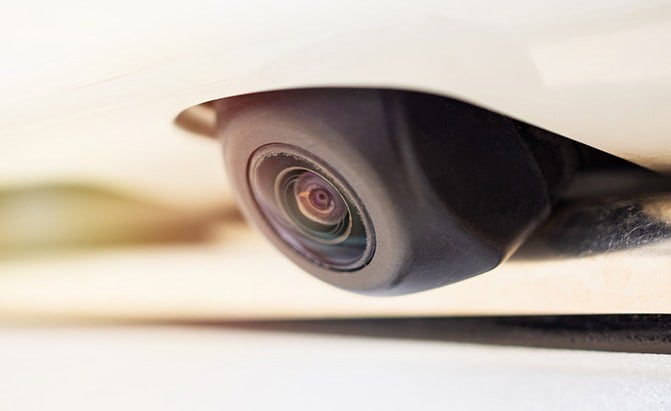




















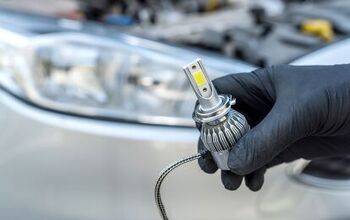



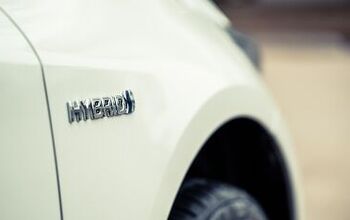
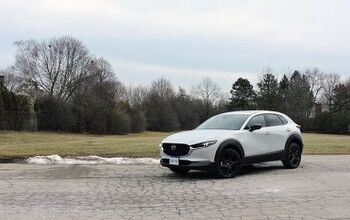
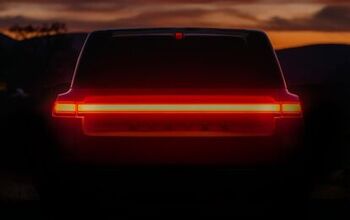


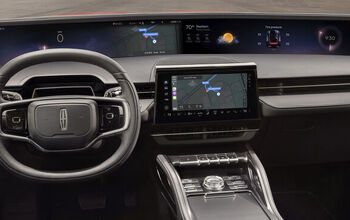
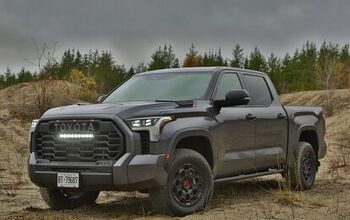


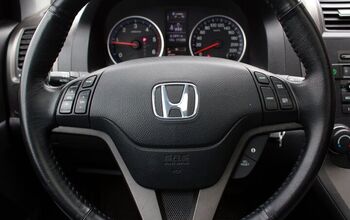


Comments
Join the conversation